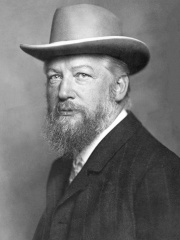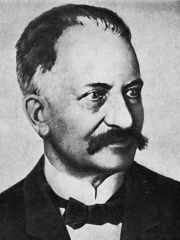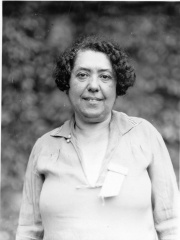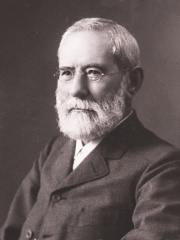



The Most Famous
CHEMISTS from Latvia
Top 4
The following people are considered by Pantheon to be the most legendary Latvian Chemists of all time. This list of famous Latvian Chemists is sorted by HPI (Historical Popularity Index), a metric that aggregates information on a biography's online popularity.

1. Wilhelm Ostwald (1853 - 1932)
With an HPI of 78.43, Wilhelm Ostwald is the most famous Latvian Chemist. His biography has been translated into 82 different languages on wikipedia.
Wilhelm Friedrich Ostwald (German: [ˈvɪlhɛlm ˈɔstˌvalt] ; 2 September [O.S. 21 August] 1853 – 4 April 1932) was a Baltic German chemist and philosopher. Ostwald is credited with being one of the founders of the field of physical chemistry, with Jacobus Henricus van 't Hoff, Walther Nernst and Svante Arrhenius. He received the Nobel Prize in Chemistry in 1909 for his scientific contributions to the fields of catalysis, chemical equilibria and reaction velocities. Following his 1906 retirement from academic life, Ostwald became much involved in philosophy, art, and politics. He made significant contributions to each of these fields. He has been described as a polymath.

2. Paul Walden (1863 - 1957)
With an HPI of 63.09, Paul Walden is the 2nd most famous Latvian Chemist. His biography has been translated into 27 different languages.
Paul Walden (Latvian: Pauls Valdens; Russian: Павел Иванович Вальден; German: Paul von Walden; 26 July 1863 – 22 January 1957) was a Russian, Latvian and German chemist known for his work in stereochemistry and history of chemistry. In particular, he discovered Walden's rule, he invented the stereochemical reaction known as Walden inversion and synthesized the first room-temperature ionic liquid, ethylammonium nitrate.

3. Lina Stern (1878 - 1968)
With an HPI of 59.74, Lina Stern is the 3rd most famous Latvian Chemist. Her biography has been translated into 25 different languages.
Lina Solomonovna Stern or Shtern (Russian: Лина Соломоновна Штерн; 26 August 1878 – 7 March 1968) was a Soviet biochemist, physiologist and humanist whose medical discoveries saved thousands of lives at the fronts of World War II. She is best known for her pioneering work on the blood–brain barrier, which she described as hemato-encephalic barrier in 1921.

4. Oswald Schmiedeberg (1838 - 1921)
With an HPI of 55.28, Oswald Schmiedeberg is the 4th most famous Latvian Chemist. His biography has been translated into 19 different languages.
Johann Ernst Oswald Schmiedeberg (10 October 1838 – 12 July 1921) was a Baltic German pharmacologist. In 1866 he earned his medical doctorate from the Imperial University of Dorpat with a thesis concerning the measurement of chloroform in blood, before becoming the first professor of pharmacology at the University of Strasbourg, where he remained for 46 years. In 1911, he testified in the United States v. Forty Barrels and Twenty Kegs of Coca-Cola trial, and later, was a major factor in the success of the German pharmaceutical industry prior to the Second World War, having trained most of the European professors at the time.
People
Pantheon has 4 people classified as Latvian chemists born between 1838 and 1878. Of these 4, none of them are still alive today. The most famous deceased Latvian chemists include Wilhelm Ostwald, Paul Walden, and Lina Stern.
Deceased Latvian Chemists
Go to all RankingsWilhelm Ostwald
1853 - 1932
HPI: 78.43
Paul Walden
1863 - 1957
HPI: 63.09
Lina Stern
1878 - 1968
HPI: 59.74
Oswald Schmiedeberg
1838 - 1921
HPI: 55.28
Overlapping Lives
Which Chemists were alive at the same time? This visualization shows the lifespans of the 4 most globally memorable Chemists since 1700.

